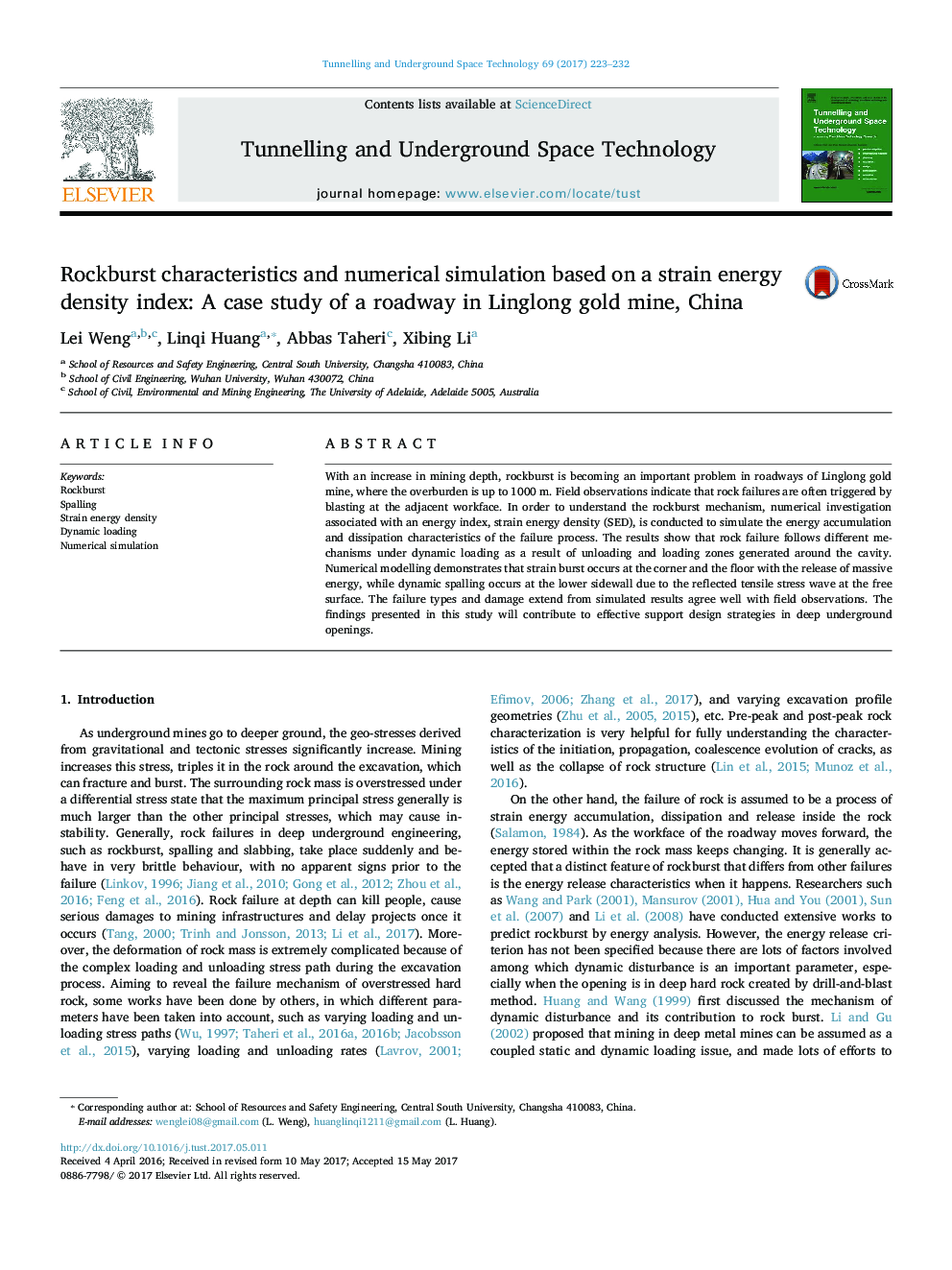| Article ID | Journal | Published Year | Pages | File Type |
|---|---|---|---|---|
| 4929298 | Tunnelling and Underground Space Technology | 2017 | 10 Pages |
Abstract
With an increase in mining depth, rockburst is becoming an important problem in roadways of Linglong gold mine, where the overburden is up to 1000Â m. Field observations indicate that rock failures are often triggered by blasting at the adjacent workface. In order to understand the rockburst mechanism, numerical investigation associated with an energy index, strain energy density (SED), is conducted to simulate the energy accumulation and dissipation characteristics of the failure process. The results show that rock failure follows different mechanisms under dynamic loading as a result of unloading and loading zones generated around the cavity. Numerical modelling demonstrates that strain burst occurs at the corner and the floor with the release of massive energy, while dynamic spalling occurs at the lower sidewall due to the reflected tensile stress wave at the free surface. The failure types and damage extend from simulated results agree well with field observations. The findings presented in this study will contribute to effective support design strategies in deep underground openings.
Related Topics
Physical Sciences and Engineering
Earth and Planetary Sciences
Geotechnical Engineering and Engineering Geology
Authors
Lei Weng, Linqi Huang, Abbas Taheri, Xibing Li,
